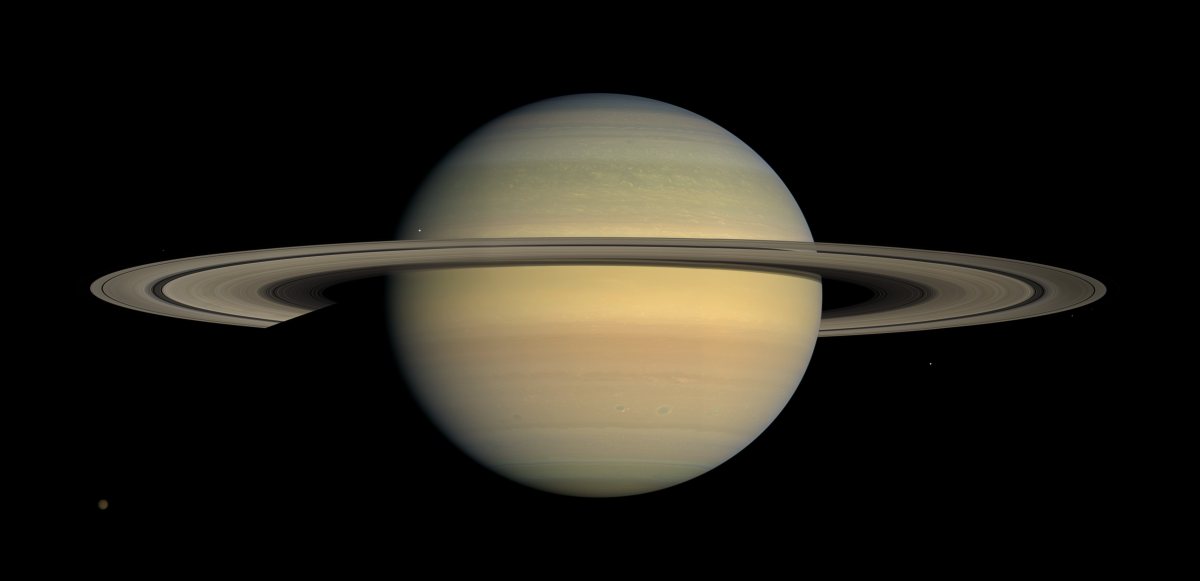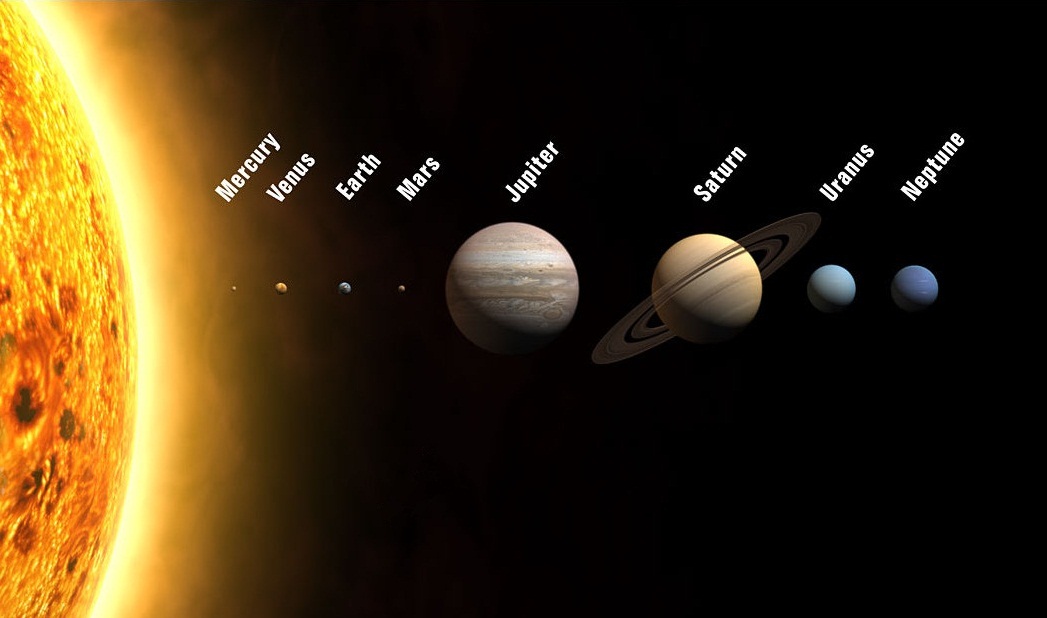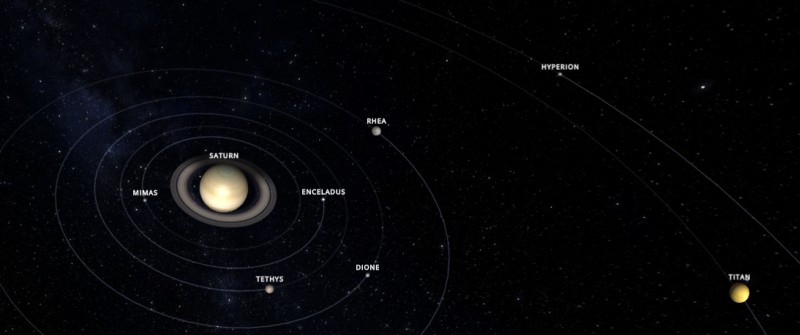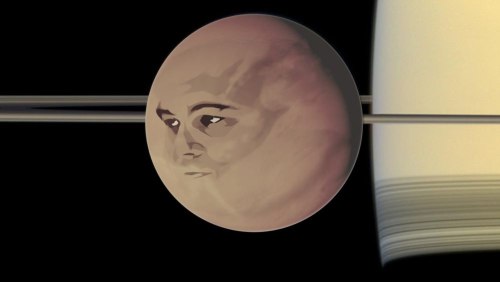
Tweet to @FirstContactSat
Follow
@FirstContactSat ![]()
![]()

Saturn is a very long way away. It is the sixth planet out from The Sun (Earth is the third), and NASA's Cassini orbiter, which took almost all of the images of Saturn we have, took seven years to get there from here, with Earth, Jupiter and Saturn at their closest approach to each other, using Jupiter as a slingshot to save time and fuel. A manned spacecraft would take much longer, except that with early twenty-first century technology we couldn't get a manned vehicle there at all.

This picture gives a stylised view of the Solar System if all the planets were in alignment, which in real life only happens very rarely, because they all orbit round The Sun at different speeds. The sizes of the planets relative to each other are correct, but they have been moved much closer together, or they wouldn't fit onto the screen. Drawn this size, your screen would have to stretch a *mile* to fit the correct distances in. Also, in real life the planets are not evenly spaced. The four small inner planets are much closer together than the big outer ones, and there is a huge gap between Mars and Jupiter.
Saturn is the second largest planet in the Solar System, after Jupiter - Earth is tiny compared to these two giants. The most famous thing about Saturn are the magnificent rings, visible from Earth with a small telescope, but it also has eight major moons and dozens of smaller ones, and the largest, Titan is more like a planet than a moon, with a thick atmosphere, weather and oceans, though they are methane rather than water. Titan is the sixth major moon out from Saturn.
 In
First Contact the Titan Mining Corporation have their headquarters at Titan
Station, in high orbit around Titan, from which they operate a number of mining
shuttles like the Prospero, and they also have a habitat on the surface. They
find the alien ship over Enceladus (en-SELL-a-duss), which is the second major
moon, smaller, much closer to Saturn, and mostly made of ice. Enceladus has
ice volcanoes that shoot huge jets into space, helping to generate the ice
particles that make up a lot of the rings.
In
First Contact the Titan Mining Corporation have their headquarters at Titan
Station, in high orbit around Titan, from which they operate a number of mining
shuttles like the Prospero, and they also have a habitat on the surface. They
find the alien ship over Enceladus (en-SELL-a-duss), which is the second major
moon, smaller, much closer to Saturn, and mostly made of ice. Enceladus has
ice volcanoes that shoot huge jets into space, helping to generate the ice
particles that make up a lot of the rings.
Titan Mining is primarily looking for a fabulously valuable mineral with a long scientific name that the miners all call TOX, which is only found in the Saturn system. Refined TOX is an extremely powerful energy source which has made a new generation of engines possible, opening up the outer planets for commercial exploitation.

Website by Jon Storm